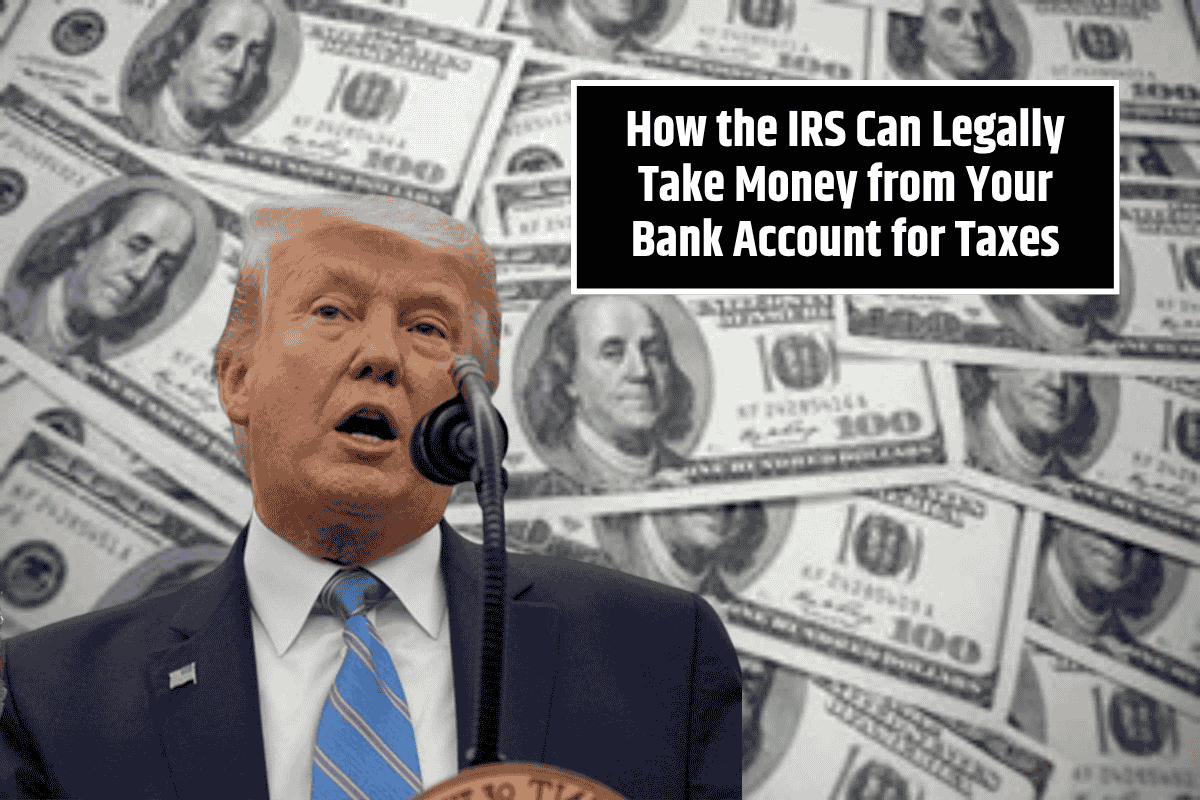The Internal Revenue Service (IRS) has a powerful tool to collect unpaid taxes: the ability to seize money directly from your bank account. This process is called a “levy.”
While the idea of the IRS taking money from your bank account can be alarming, it is not done randomly. There is a strict legal procedure in place to protect taxpayers’ rights and ensure that the IRS is only using this power when necessary.
What is an IRS Levy?
A levy is a legal action that allows the IRS to take money directly from a taxpayer’s bank account to cover unpaid tax debts. This action is grounded in the Internal Revenue Code (IRC) Section 6331, which gives the IRS the authority to seize a taxpayer’s property, including bank accounts, if they owe taxes and have not responded to previous notices.
The purpose of the levy is to enforce tax compliance and ensure that the government can collect taxes that are rightfully owed.
How Does the IRS Levy Process Work?
The IRS cannot simply access your account without notice. There are steps that must be followed before a bank levy is issued:
- Tax Assessment: First, the IRS must determine that you have unpaid taxes, such as income tax or payroll tax. They issue a tax assessment, which is essentially a formal determination that you owe taxes.
- Bill Sent: The IRS sends you an itemized bill, such as CP14 or CP501, showing the amount you owe, including taxes, penalties, and interest. This bill will request immediate payment.
- Notice of Failure to Pay: If you do not respond to the initial bills, the IRS must send a “Notice of Intent to Levy” at least 30 days before they can proceed with a levy.
This notice will be sent via certified mail to your last known address, and it must inform you of your right to a Collection Due Process (CDP) Hearing, where you can discuss ways to resolve the debt, such as paying in full, setting up an installment plan, or negotiating a reduced amount. - Final Opportunity to Appeal: The notice gives you a final chance to avoid the levy, either by settling the debt, proving you cannot pay, or requesting a hearing.
What Happens When the IRS Issues a Levy?
If you do not respond or resolve the debt, the IRS may proceed with the levy. They will send a formal bank levy order, called Form 668-A(C)DO, to your bank. This legal order requires the bank to freeze your account and hold any funds available.
The bank then has 21 days to release the funds to the IRS unless you can prove that the debt is incorrect or that paying would cause severe financial hardship.
After the 21-day period, if the debt is not settled, the bank will send the funds to the IRS to cover the tax debt. If the bank holds more money than what is owed, the excess will be returned to you.
Which Accounts Can the IRS Seize?
The IRS can seize almost any account that you have access to for withdrawal, including:
Checking accounts
Savings accounts
Investment accounts with immediate liquidity (like money market accounts)
Credit union accounts
It’s important to note that joint accounts can also be levied. However, if your spouse or another account holder is not responsible for the tax debt, they can request that their portion of the account be returned to them.
Protecting Your Rights During an IRS Levy
If the IRS decides to issue a levy, they must follow specific legal steps. You have the right to be notified in writing and to request a CDP hearing to resolve the issue.
Always be sure to read any notices carefully, and if you are unsure of your rights or options, consult with an attorney or IRS expert who can help guide you through the process.
In the end, the IRS levy process is serious but follows a clear and structured process. By staying informed and proactive, you can avoid or resolve issues with the IRS before they escalate.
